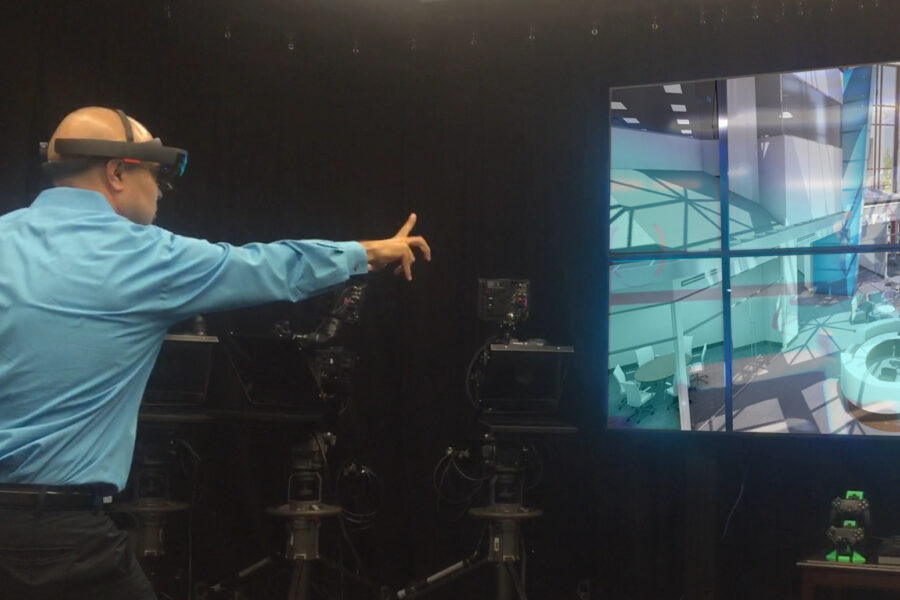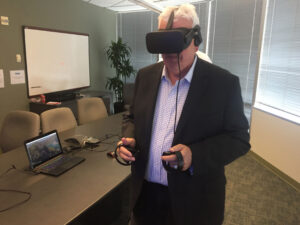A Game-changing Technology, Now for the AEC Industry

It was the first meeting at the project site. Hesitation quickly turned to panic after discovering major errors in the plans. These mistakes were going to cost millions and put safety at risk.
Everyone stood in shock. Only the project manager was smiling.
“It’s a good thing we’re looking at a game-engine simulation. Otherwise, this would have been disastrous for the project,” he said.
One thing instantly became clear to everyone who took part in the simulation: the game engine is no longer just for entertainment. It is a technology that offers tremendous value to the AEC industry. With scenarios like this becoming commonplace, game engines are finding their way out of video-game production studios and into the hands of architects, engineers and contractors.
Video games for AEC?
Historically, the AEC industry has been quick to take on new technologies like BIM (building information modeling) and VDC (virtual design and construction). Still, many AEC professionals may wonder what exactly a game engine is.
Simply put, a game engine is a software program. More than just a 3D model, a game engine generates a combination of 3D graphics, customized tools, and real-time navigation. This technology allows users to experience a simulated environment in new and intuitive ways.
For years, video-game designers have depended on game engines to create fantastical imaginary worlds. Using a game engine, multiple players can simultaneously engage each other within those worlds via the internet. But, how is this relevant to the AEC industry?
Couple video-gaming capabilities with other advances in 3D technologies such as BIM and VDC and the possibilities are endless. A deeper look reveals the game engine is the foundation upon which virtual reality (VR) and augmented reality (AR) technologies are built. VR and AR are considered by many tech enthusiasts to be the next innovations to transform the AEC industry, impacting everything from design reviews and construction planning to training simulations and on-the-job collaboration.
Integrating game engines: benefits outweigh challenges
More and more AEC firms are pushing the limits of game-engine technology. They are discovering new ways of using game engines to enhance the design and construction process. Through this ongoing exploration, early adopters such as RS&H have uncovered several benefits as well as a few challenges of integrating game-engine technology into their project workflow.
One of the biggest advantages that game engines bring to a design firm like RS&H is the ability to instantaneously view and interact with project data in a contextual setting. In other words, teams of people can now collaborate in a simulated environment. This allows for enhanced communication, new insight, faster decision making and more accurate feedback.
As appealing as these benefits may be, game engine integration is not without substantial challenges. Perhaps the biggest hurdle to easy integration is that game engines do not seamlessly fit within the traditional workflow of architects, engineers and contractors. Aggregating 3D data to bring into a game engine can be intensive. This is currently a one-directional process since today’s game engine models are not capable of linking back to traditional CAD software.
In addition, successful game engine integration requires both highly specialized expertise and extremely powerful hardware. Anyone who wishes to get the most out of game-engine technology should be aware of these investments. Still, those who do invest are sure to reap substantial rewards.
Game engines are here to stay
In the future, game engines will be used as a standard part of the design and planning process. The technology behind game engines will continue to diversify and will eventually be incorporated into a new form of CAD, or what some might start calling a “design engine”.
We will witness the next generation of architects, engineers and contractors use VR and AR as the status quo. And eventually, all projects will be planned, designed and simulated in a virtual ecosystem. The result will be a more organized, efficient and sustainable world. Sooner than we expect, the AEC community will look back and be astonished by the notion that game engines were once just for entertainment.




